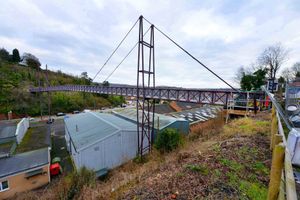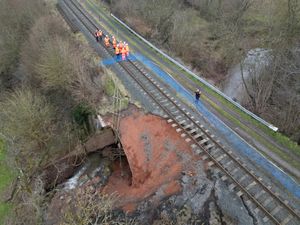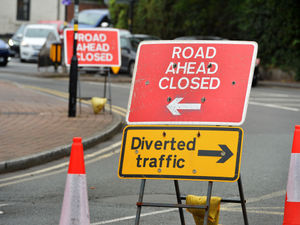SVR Bridgnorth bridge reopens after safety fears
A footbridge at Severn Valley Railway's Bridgnorth station has reopened after temporary repair work was completed.

The footbridge was closed on January 6 because of safety concerns.
Temporary repairs carried out by Shropshire Council contractor Ringway were completed on Friday, with another council contractor, Kier, now working on a permanent fix to be put in place later this year.
The closure came after staff from the SVR station notified police that the end of the footbridge, on the station side, had lifted up significantly and appeared to be hanging dangerously in mid-air.




